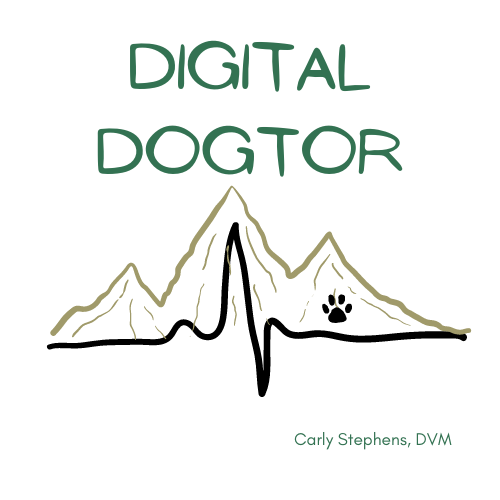Physical Rehabilitation
Animal rehabilitation such as range of motion exercises, therapeutic exercises, and aqua therapy (underwater treadmill, swimming) help to improve joint mobility, relieve pain, improve normal function, and improve exercise endurance.
Patients that would benefit from physical rehabilitation (aka physical therapy) are those with athletic injuries, recovering from surgeries, with neurologic conditions, geriatric patients, or athletes looking to improve their conditioning. It is also beneficial as a supplement to those who are already on pain medications to have other ways to relieve pain.
Rehabilitation uses a variety of therapies, including acupuncture, laser therapy, therapeutic exercise and sometimes underwater treadmill.
Ask me more about the best places to take your pet in your area or see below to find a therapist near you. We work with these specialists by communicating about your pet’s specific case and needs.
There are some general exercises you can do at home. Please ask me or your veterinarian to make sure your patient is a good candidate for these exercises.
Passive range of motion - helpful for patients recovering from surgery, older patients to get blood and muscle moving without stress on the joints, or a warm up before exercising
https://www.youtube.com/watch?v=hHXdqy__vJo&t=195s
Move each joint through its natural range of motion (flexing and extending each joint, as if they are walking). You will feel a slight tension at the end of range of motion for your pet - this is the end of the range. If your pet seems uncomfortable, decrease the range until they are comfortable. You can do this twice a day.
Move each joint through its natural range of motion (flexing and extending each joint, as if they are walking). You will feel a slight tension at the end of range of motion for your pet - this is the end of the range. If your pet seems uncomfortable, decrease the range until they are comfortable. You can do this twice a day.
Cookie stretches - improves spinal mobility, warms up the spine before exercise, works out the core and balance and is helpful for those recovering from injury. Use the treat to lure your pet to look up, look down, and reach side to side to each shoulder. It is very important to let your pet set his or her limits. If one direction is uncomfortable, your pet will be resistant to stretch in that direction and please do not push it.
https://www.youtube.com/watch?v=5zS-_xqm8ro It is best to start with your dog on flat ground before using any elevated surfaces.
To make this exercise a bit harder, you can elevate either the front or back legs by two inches on a foam mat or a textbook with a yoga mat placed on top.
Massage - decreases pain, increases blood flow, can help to decrease swelling and deepens your bond with your pet with the release of oxytocin. There are several different types of massage you can do, but the most common is petrissage and effleurage. Start with light pressure then increase as to your pet’s comfort level. The same technique applies to cats.
How to find a therapist:
There are currently two certifications in the country for canine physical therapy. (A third one is in development)
A Certified Canine Rehabilitation Therapist (CCRT) and a Certified Canine Rehabilitation Practitioner (CCRP). These practitioners and therapists have undergone additional training of anatomy, sports medicine and manual therapies including joint mobilization and are able to offer rehabilitation services either in clinic or via mobile practice and develop home exercise programs.
Find a therapist:
https://www.caninerehabinstitute.com/Find_A_Therapist.html
https://www.utvetrehab.com/canine-rehab-ccrp/ccrp-practitioners/
Modalities that can be used at home:
Ice:
Ice causes vasoconstriction (temporary shrinking down of blood vessels) to decrease inflammation and pain. This is a very safe modality that can be used when your pet is having an acute flare up of pain or soreness from an injury. You can use ice cubes in a ziploc or a frozen wet washcloth. Make sure to put one layer of thin towel between your dog's skin and the ice. This can be done 1-2x a day during the initial painful period (usually the first day or two after an injury) for 5-10 minutes.
Heat:
Heat causes vasodilation (temporary widening of blood vessels) to increase blood flow and relax muscles. This can be helpful for chronic pain. We tend to NOT recommend heating pads because animals will not always move away and can get burned. It is much safer to use a rice sock or potato that is put in the microwave. If it is comfortable to go in your armpit for one minute, then it should be comfortable enough to sit on your pet for 5 - 10 minutes. This can be performed once daily.



